The Google Pixel 3 Review: The Ultimate Camera Test
by Andrei Frumusanu on November 2, 2018 11:00 AM EST- Posted in
- Smartphones
- camera
- Mobile
- Pixel
- Snapdragon 845
- Pixel 3
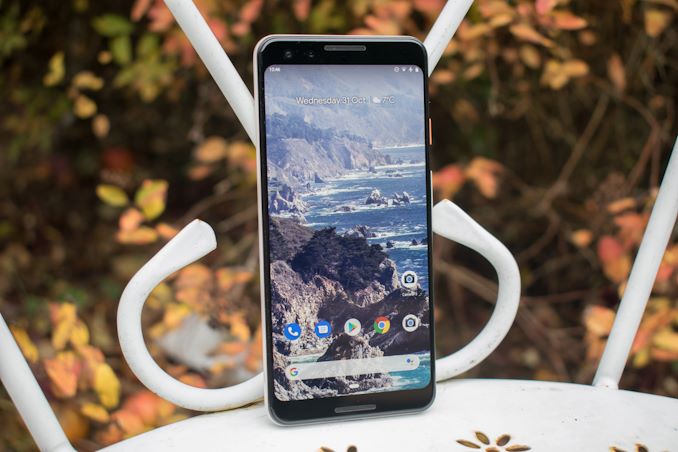
The Pixel 3 is Google’s third generation in-house design, meant to showcase the company’s own view of what an Android device should be, whilst fully embracing Google’s first-party software applications and services. The one thing Google’s Pixel phones have become synonymous with is the camera experience. The Pixel 3 continues this focal point of the line-up, and promises to be “the best smartphone camera”, period.
Alongside Google's forte, software, this year's Pixel family has pushed forward with a few hardware design choices, some of which we might have liked to have seen last year. The new units have updated panel technology, integrated wireless charging, and even fast wireless charging. Also now for Google, the Pixel 3 actually looks like a current flagship smartphone, compared to the Pixel 2 which did not at the time.
This year’s Pixel 3 phones hope to maintain the software advantages, doubling down on them with various new innovative features, especially on the camera side, whilst addressing the hardware aspects to be considered a true vendor flagship of a very competitive generation.
In this full analysis of the Pixel 3, we'll cover the hardware, the design, the software, and a detailed look to what makes users rave about the camera. We've tested over 18 current and former high-end smartphones worth of cameras to get to our conclusions, with all the analysis contained within these few pages. Commentary is of course, more than welcome.
It should be noted that for this review, unfortunately we only were able to get our hands on a regular Pixel 3, colored in 'Not Pink'. We do hope that sometime in the future we’ll be able to do a battery update on the bigger Pixel 3 XL once we’re able to source one.
Pixel Hardware and Design
In terms of hardware specifications, the new Pixel 3 family follows the many Android flagships trend of this year: at the heart of the phones, the Snapdragon 845 SoC is powering the devices. 2018 has been an excellent competitive year for Qualcomm and the S845 was able to take the performance lead among its Android competition. One thing to note here if you’re considering a Pixel device is that Google’s release schedule is very much out of sync with the silicon vendor’s SoC lineups - meaning users investing in a Pixel are buying a flagship phone whose silicon is by now 8 months old, and will most likely will be superseded by its successor in just a few months’ time. For those that want the leading edge, the Pixel 3 might be a short lived experience. However that doesn't detract from what is under the hood today.
| Google Pixel 3 Family | |||
| Pixel 3 (reviewed) | Pixel 3 XL | ||
| SoC | Snapdragon 845 4x Kryo 385 Gold (Cortex A75 based) @ 2.80 GHz 4x Kryo 385 Silver (Cortex A55 based) @ 1.76 GHz |
||
| GPU | Adreno 630 @ 710MHz | ||
| DRAM | 4GB LPDDR4X | ||
| Display | 5.5" AMOLED 2160 x 1080 (18:9) |
6.3" P-OLED 2960 x 1440 (18.5:9) |
|
| Size | Height | 145.6 mm | 158.0 mm |
| Width | 68.2 mm | 76.6 mm | |
| Depth | 7.9 mm | 7.9 mm | |
| Weight | 148 grams | 184 grams | |
| Battery Capacity | 2915mAh | 3430mAh | |
| Wireless Charging | Qi | ||
| Rear Camera | 12.2 MP, f/1.8, 27mm (wide), 1/2.55", 1.4µm, OIS, dual pixel PDAF |
||
| Front Cameras | Dual 8MP modules Regular f/1.8 75° & wide angle f/2.2 97° FoV lenses |
||
| Storage | 64 GB / 128 GB | 64 GB / 128 GB | |
| I/O | USB-C | ||
| Wireless (local) | 802.11ac Wi-Fi + Bluetooth 5.0 LE + NFC | ||
| Cellular | CAT 16 (1Gbps DL / 75Mbps UL), 5x DL CA, 4x4 MIMO, LAA, 256-QAM DL and 64-QAM UL |
||
| Splash, Water, Dust Resistance | IPX8 (Water resistant up to 1m) |
||
| Dual-SIM | nano-SIM | ||
| Launch Price | 64 GB: $799 / £739 / 849€ 128 GB: $899 / £839 / 949€ |
64 GB: $899 / not avail. / 949€ 128 GB: $999 / £969 / 1049€ |
|
Google also outfits the Pixel 3’s with relatively conservative DRAM and storage options. Both phones come with 4GB of RAM as well as a base storage variant of 64GB, with the option to buy a higher tier 128GB variant. Most of Google's competition are offering 6GB+ versions at similar pricing it should be noted.
In order to combat this low memory, one new hardware/software feature is an application memory management 'lowmmemorykiller' background application/daemon which applies various settings to keep certain software in memory for fast app loading times. Whilst in general I don’t put as much value into this as some other people do, I did however notice that in everyday use the phones did need to reload applications more often. There have been user reports already that the phones are struggling to keep things open and alive in memory. No doubt additional tuning of the memory management will be done through updates and the lifecycle of the unit.
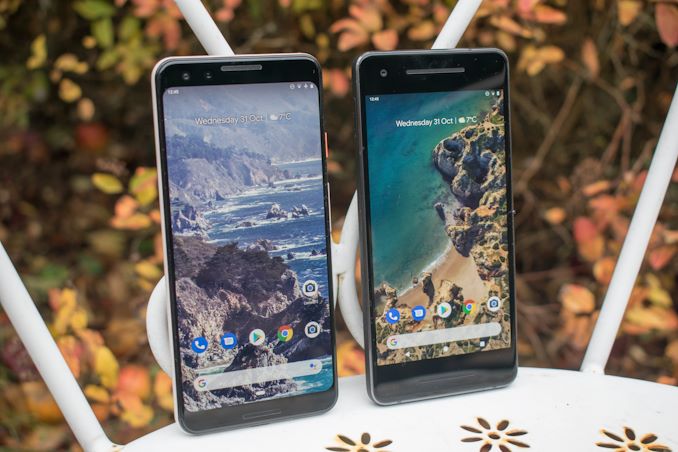
Pixel 3 (left) and Pixel 2 (right)
Design-wise, the Pixel 3 is a big upgrade over the Pixel 2. Gone are the 2015 top and bottom bezels, and instead we find a more contemporary design with an elongated 18:9 (or 2:1) aspect ratio screen, vastly increasing the screen-to-body ratio of the phone. The screen is still an OLED with an FHD+ resolution (2160 x 1080 pixels) – though this year it seems that Google has split suppliers between the small and XL variants, with the Pixel 3 panel now being manufactured by LG while the Pixel 3 XL uses a Samsung panel.
On the front of the device, we luckily don’t need to go into any big controversial discussions about a notch as the small Pixel 3 (As opposed to the 3XL) doesn’t have one. What is new for both of the Pixel 3 smartphones is a secondary wide-angle front-facing camera, allowing for wider selfie shots or simply a wider field of view when doing front video recording or communications, which is actually quite handy.

Pixel 3 (left) and Pixel 2 (right)
On the back of the phone, we also see a big design change: Google has switched over from a metal unibody design with a top glass cut-out, to a full glass back panel. Google still maintains the same contrasting glossy glass design feature at the top of the phone, and achieves this by chemically etching the bottom part of the glass to a matte finish.
The matte feel of the glass is extremely similar to the design of the OnePlus 6’s etched models, and it does stand out as a completely different feel than one might be used to from glass phones. It really helps with the grip, and totally avoids fingerprints. My only issue here is that Google didn’t extend this finish to the very edges of the glass back, as well as leaving out a 1mm ring around the fingerprint sensor, the latter whose shadows on the glass looks very odd and a bit cheap.
Going for a glass back allows Google to now adopt wireless charging, and supports the Qi standard. The phone also supports fast wireless charging up to 10W. Unfortunately again, it seems that Google is only allowing this on certified chargers, thus not really adhering to the Qi fast-charging standard. This means almost all existing 'fast' wireless chargers will be limited to 5W.
Google bundled its own Pixel Stand wireless charging pad with the reviewer kits (It's not bundled with commercial units), and it works as well as it says on the box. One big hiccup I noticed is that the Stand will only accept certain USB-C chargers with PD at certain voltages – so users are restricted to the bundled power supply as well as a limited number of USB C PD chargers to even power it on at all.
It should be noted that the glass on the rear has some flex even under light pressure, and I can hear it touching the internals (charging coil and battery). This was one of the first things I noticed when unboxing the phone, and it makes it feel a lot less well built as for example glass backs from Samsung or Apple.
The camera on the Pixel 3 sees a minor sensor upgrade from the Sony IMX362 to the IMX363 – both units are 12.2MP sensors with 1.4µm pixel pitches. The aperture is also the same at f/1.8. There are no secondary modules here, and Google prefers to fall back to software innovation for improving zoomed in pictures: the Pixel 3 exclusively ships with a new “Superzoom” mode that promises to improve digital zooming, more on this later in the camera section where we’ll have a very big comparison with most of this year’s flagship devices.
The left side of the phone is bare of any buttons, and we find the power and volume rocker on the right side. Google accentuates the colour of the power button, on my “Not pink” pink unit this is a very neon orange that just doesn’t pop up in images as much as it does in real life.
On the top of the phone we find a microphone hole.
The bottom sees the single nanoSIM slot as well as the USB-C charging port. Like on the Pixel 2, the Pixel 3 units do not offer any headphone jack. One argument for the removal of the headphone jack, beyond the by now debunked claim that it offers larger internal space dedicated to batteries, is that it allows for better audio quality. Indeed if headphones have their own DACs built-in, then they can be calibrated to the sound profile of the individual headphones, instead of relying on the phone to serve a correct frequency response. That being said, unfortunately the USB-C earbuds bundled with the Pixel 3 are among the worst I’ve ever listened to and can be easily described as complete rubbish. I would easily choose USB-C earbuds from any other primary smartphone vendor.
In the rest of this review, we cover the following:
- Introduction and Design (this page)
- System Performance
- GPU Performance
- Display Measurements and Calibration Testing
- Battery Life and Power
- Camera pt 1: Daylight with SuperZoom and Scenic
- Camera pt 2: Daylight with Dynamic Range
- Camera pt 3: Low Light and NightSight
- Camera pt 4: Video Recording and Speaker Evaluation
- Pixel 3 Conclusion


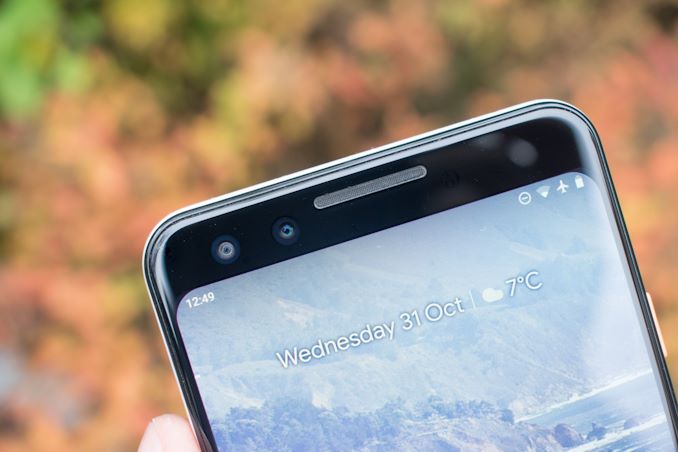


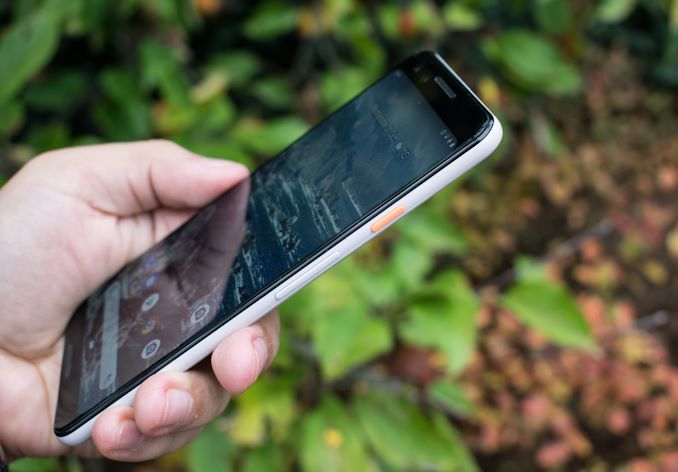
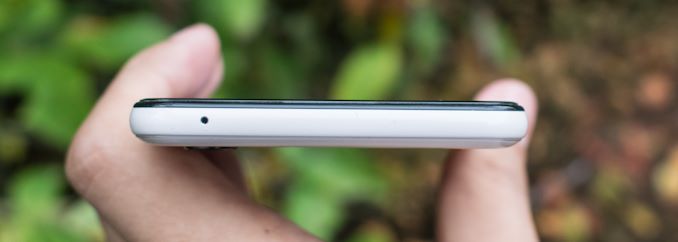









135 Comments
View All Comments
buxe2quec - Sunday, November 4, 2018 - link
When I buy a phone I go to DxO Mobile and from the top ranking I go down until I find a phone within my budget.DxO however is sometimes controversial, so I would like to see a synthetic number from Anandtech, so that I can quickly do the same here as well.
misaki - Sunday, November 4, 2018 - link
The Pixel3 4k EIS video is linked to the Pixel 2 video and the Pixel2 1080p30 is labeled incorrectly.I don't know if it shows up in the original video or if it's a Youtube encoding issue but the unstabilized Pixel 3 4k video retains a lot more detail than both of the the Pixel 2 4k videos, stabilized and unstabilized. I see it plainly without even needing to pixel peep. Pixel 2 video capture had good stabilization but was always disappointing in all other ways and behind other flagship phones. If they at least improved their encoder for the Pixel 3 like what I'm seeing then it's a good start.
cwolf78 - Monday, November 5, 2018 - link
Thanks for the thorough review. One question I have is that there are many other reviewers out there that have praised the included ear buds and even had separate reviews for them they were so impressed. I don't think anyone has claimed the sound quality is top-tier by any means, but they were supposed to sound decent and have excellent Google Assistant support. Just curious if maybe you have a defective set or your standards are unrealistically high?Andrei Frumusanu - Monday, November 5, 2018 - link
I wouldn't say my standards are that high - and *maybe* my units are defective. Compared to any other bundled units they sound as if they're covered by tape and very muffled. A quick frequency response comparison ( https://twitter.com/andreif7/status/10586681768783... and yes I know this isn't an absolute measurement, but a relative one to the Apple ones ) represented what I heard, with insanely weaker mid-ranges.Fluffywings - Monday, November 5, 2018 - link
Hi Andrei,Great review and clearly a lot of effort. As you mention in the camera review, excerpt below, the shadows are darker than should be, which is something I noticed with the Pixel 2 back in 2017. I have found a simple solution that changed how I use my Pixel 2 camera. When setting up the picture, click on a darker area for focus. It will bring up the shadows and the picture will look better than before but with much detail in the shadows. I will take usually 2 pictures, one clicking on the darkest portion of a scene, and the second, clicking on a slighter less darkest portion of the scene.
Can you give it a try and let me know what you think?
"A characteristic of Google’s phones we’ll see throughout the pictures is that the processing likes to darken the shadows more than what the sensor actually sees, and this most visible in the trees in these pictures, as the pines in the middle picture lose a lot of detail compared to any other phone, also something that happens throughout darker objects of the whole scene."
Andrei Frumusanu - Monday, November 5, 2018 - link
I mean, sure, that's a way to do it, but then I'm no longer testing the default capabilities of the phone. I also said this year Samsung overexposes too much in many scenes, and I'm also not going around to adjust that for every shot.Fluffywings - Sunday, November 11, 2018 - link
Makes sense. Most people will use the phone in the same way.s.yu - Thursday, November 15, 2018 - link
I also notice that in my Gcam port to Note8, I set everything to max for maximum IQ but still sometimes shadows drop to pitch black too fast. Switching to the default camera app with the exact same framing I could get a much finer gradient in the shadows.The reason I still use GCam is higher DR in most instances and less noise, less smearing. Also the slight HDR effect applied works better with snapseed's set of adjustment sliders, especially ambience. The default camera works better with LR, snapseed's often a little quirky and counterintuitive.
stacey94 - Monday, November 5, 2018 - link
Great review! I really wanted to see the display results.I don't know that you guys ever test this stuff, but it would be nice to see audio output comparisons between phones for the 3.5mm jack. (As it seems like a lot of digital dongles shipping with phones have lower quality than the Qualcomm DAC built into the phones).
And some level of Bluetooth performance analysis would be helpful, whether that's through LDAC bitrate or signal strength. I know the original Pixel had an "antennagate" problem where touching the band on the top right of the phone would immediately cause BT audio to garble and cut. My Pixel 2 was also hit or miss with several BT devices compared to an iPhone 8.
On another note, is testing the Surface Laptop 2 on the agenda at all? I'm mainly looking to see the color accuracy of the display and find out if they're still using that awful SSD the first gen shipped with.
dgtangman - Monday, November 5, 2018 - link
I'm seeing a very strange behavior with the sample images and would like to know if anyone else has encountered it. If I right-click and select "Open Link in New Window" I get a new window that shows the full-size version of the currently displayed sample the first time I click on the image. If I then pick a different sample the in-page sample image changes and the link name shown when I hover on the sample image changes, but if I right click and open in a new window again I get the same image I saw the first time; the URL displayed in the new window is the same as for the first sample image and is not the URL that was displayed when I right clicked on the sample image. To see a different full-size image from a given set of samples I have to reload that page of the review.Has anyone else seen anything like this? I've been trying to figure out anything that could be wrong on my end to get these results, and I haven't had any luck. I'd like to blame it on my Comcast connection, but I can't figure out how they could accomplish this either.
I've tried this on Firefox 63 with all add-ons disabled and on Chromium 70 with identical results.